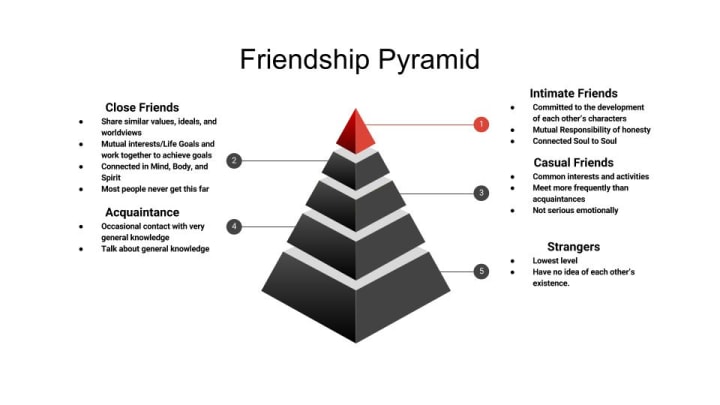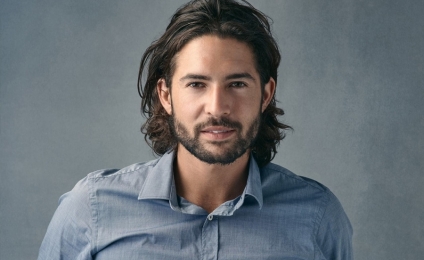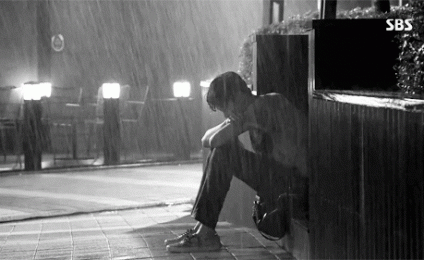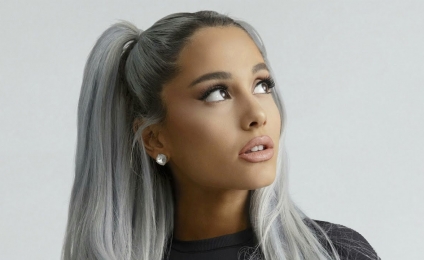When we're kids, making friends seems like the easiest thing in the world. A simple "Hey, you like dinosaurs? I do too!" is sometimes all it takes to spark a brand-new bond. There's no analysis, no second-guessing—just an innocent connection over shared snacks, superheroes, or recess games.
But as we get older, the process becomes more complicated. That childlike ease is replaced with emotional baggage, misunderstandings, and expectations. Often, we continue using the same childlike criteria—shared interests or instant chemistry—to call someone a "friend" without really understanding what that title should mean. And that’s where things start to go sideways.
This behavior leads us to skip important stages in the development of friendship. Take a common college scenario: two roommates hit it off right away during orientation week and declare themselves best friends by day three. But come mid-semester, an argument—maybe over a guy, or a noisy night out—turns everything sour. Suddenly, they're talking behind each other’s backs and airing each other’s secrets. The friendship collapses not because it wasn’t real, but because it was rushed.
When we bypass the natural progression of relationship-building, we often end up misjudging where someone truly stands in our emotional circle. This can lead to disappointment, betrayal, or even a complete friendship fallout. I learned this lesson the hard way during my early college years. Raised with the mindset of treating everyone like a close companion, I found myself continually let down—until I discovered the power of mapping out friendship stages and setting appropriate expectations for each.
Below is a breakdown of the Five Stages of Friendship Development, illustrated through a pyramid model. The concept borrows inspiration from the writings of Dr. Myles Munroe in Waiting and Dating, but it's been adapted and restructured through personal reflection and research.

Stranger: “I Don’t Know You Yet”
This is where all friendships begin: complete unfamiliarity. You walk past each other on the street, sit in the same lecture hall, or maybe ride the same train—yet neither of you exists in the other’s world. This stage might seem irrelevant, but it’s actually the foundation of all future connection. A stranger becomes something more only if a first impression—however brief—is positive. One awkward or rude encounter could erase any chance of progress. But a smile, a kind gesture, or a few words exchanged could open the door to the next level of rapport.
Acquaintance: “I Know of You”
An acquaintance is someone you recognize, maybe even say hi to occasionally. You might know their name, their job, or who they hang out with. You see them at the gym or in your office corridor and make small talk about the weather, the latest episode of a popular show, or mutual friends.
At this stage, interactions are superficial but familiar. Associates at work or members of the same club often stay in this category. It’s a functional relationship, not an emotional one. Still, every great friendship has to pass through this checkpoint—so while it's light and surface-level, it shouldn't be dismissed.
Casual Friend: “I Know You Now”
Here’s where things start to get real. You begin spending more intentional time together—grabbing coffee, joining group outings, sharing inside jokes. You talk about your likes and dislikes, discuss ideas, and maybe even begin cheering each other on in small ways.
At this point, there's personal investment, though still minimal emotional risk. You begin noticing the quirks, strengths, and imperfections that make up the real person behind the polite exterior. For many, this is as far as it goes. Some friendships stall here—either because deeper connection isn’t pursued or because fundamental differences surface. Still, casual friendships serve their purpose and can be a source of fun and support.
Close Friend: “I Understand You”
This level marks a significant shift. When someone becomes a close friend, the relationship is not only personal but also emotionally meaningful. You talk about your dreams, your fears, your family. You’re there for each other not just in good times, but during bad ones too. These are the people you call in the middle of the night when life unravels.
There’s a mutual sense of loyalty here. You’ve probably gone through ups and downs together and still emerged strong. You've both seen each other’s best and worst moments—and didn't walk away. That kind of shared history builds trust, resilience, and something approaching true companionship.
Intimate Friend: “Our Souls Are Connected”
At the peak of the pyramid sits the most sacred tier: intimate friendship. This is where two people truly see each other—unfiltered, vulnerable, raw—and love each other all the more for it. You’ve shared your deepest fears, your biggest mistakes, and your proudest victories. You've weathered storms together, and there's no facade left.
This level doesn’t come quickly—or often. It's earned through time, through pain and joy, through trust and forgiveness. It’s spiritual, emotional, and mental connection all at once. These are the people who help you grow into your best self, not because they tell you what to do, but because they know your soul and walk alongside it. Aristotle once said, “A friend is a single soul dwelling in two bodies.” That quote belongs here.
Understanding the five stages of friendship isn’t just an academic exercise—it’s a tool for emotional well-being. When we understand where someone truly stands in our life, we adjust our expectations. We avoid the heartbreak that comes from assuming too much, too soon. And we begin to treat people with the right balance of warmth and caution, knowing that true friendship takes time to nurture and grow.
So, next time you meet someone new—or re-evaluate someone already in your life—think about where they might fall on this pyramid. Then let the relationship evolve, not by force, but by depth, honesty, and patience.























